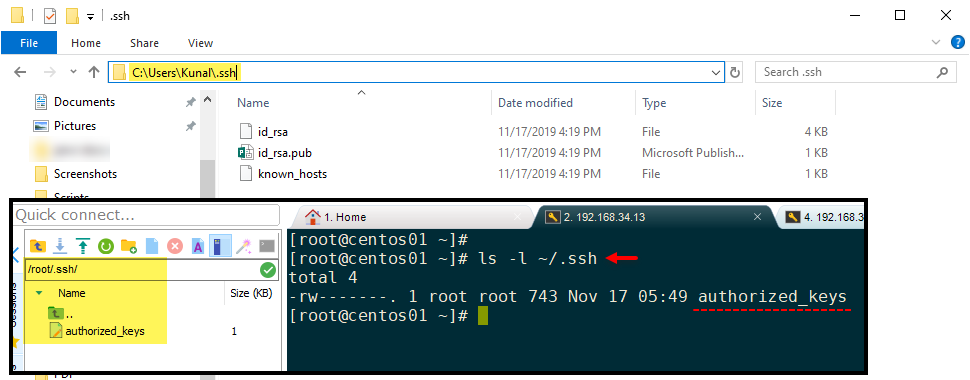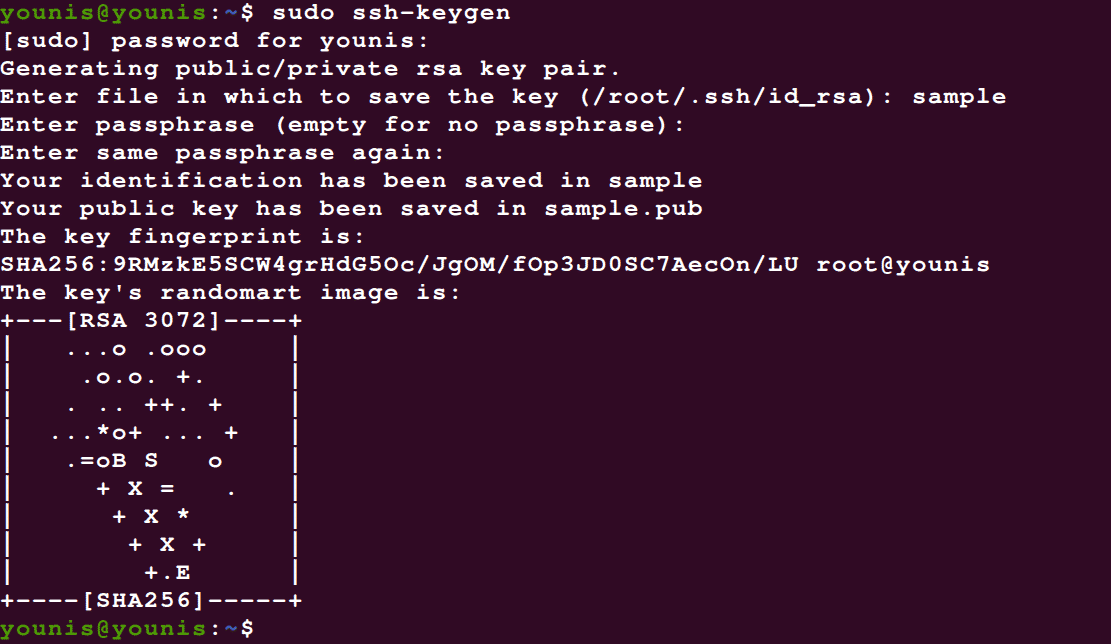
They enable your organization’s authorized, authenticated users to access critical systems to perform their jobs. In a nutshell, SSH keys are another form of machine identity and authentication. After that, all SSH interactions between the two devices will rely on the key pair for authentication. Basically, you use the local machine that has the private key to authenticate to AWS once. These keypairs, which consist of private and public keys, are used to authenticate users (their devices) and hosts. SSH-key-based authentication allows a user to authenticate automatically using a cryptographic keypair.
#Ssh shell with other persons authorized keys password#
An example of this is when one of your coworkers enters their individual username and password into a login field to access a file in, say, Amazon Web Service’s Elastic Computing Cloud (AWS EC2). Password-based SSH authentication occurs when a user manually enters their login credentials to access a secure resource.And our primary focus, as your can probably guess from this article’s title, is going to focus on SSH key management best practices specifically. However, the two we’re going to focus on today are password- and SSH-key-based authentication methods.

SSH authentication can occur in a few different ways. SSH Authentication (and Where SSH Keys Fit Into the Picture) (Going out a limb here to say that SSH security is important to you since you’re still here and have read this far, at least…) A screenshot by Jeremy Caban, ’s IT administrator and DevOps engineer. So, as you can imagine, protecting that kind of privileged access through proper SSH key management is crucial to your organization’s security. SSH access serves as your key to your kingdom, giving you control of all commands and files. When you use SSH to log in using admin root access, you have complete control over the machine. A screenshot by Jeremy Caban, The SSL Store’s IT administrator and DevOps engineer. As such, it’s easy to see how SSH authentication plays a critical role in your organization’s identity and access management processes. The way it works is when authorized users log in to a secure shell environment to authenticate, their devices gain access to one or more devices or resources within your secure IT environment. More simply stated, SSH is the numero uno system that IT admins use to log in to servers and other Linux machines to manage them remotely. As something that’s literally built into Unix and Linux servers, it’s a client-server model system that aims to secure remote access between users and critical systems via insecure connections. SSH is critical for network and general system administration (such as for managing firewalls, networks, servers, etc.).

SSH, which stands for secure shell, is a cryptographic network protocol that allows secure authentication and data communications between two devices via open channels. What Is SSH Key Management? The Role of SSH Keys in Identity & Access Managementīefore we jump right into defining SSH key management, let’s first quickly rehash what secure shell is, what SSH keys are, and how organizations use them for user-friendly authentication and increased data security. But what are the top 14 SSH key management best practices you need to implement now and how do they benefit your organization? This is why we’ve decided to tackle an article that addresses some of the most important SSH key management best practices for your business. However, we have to acknowledge that secure shell (SSH), which is something virtually all companies use in some capacity, also needs some love in terms of coverage every once in a while. Here at Hashed Out, we typically focus on public key infrastructure (PKI)-based forms of authentication and digital identity because that’s our specialty and area of expertise. SSH key management is an oft-overlooked element of identity and access management (IAM). Here are several SSH key management best practices that will help you get started In Monthly Digest, ssl certificates How well you manage and secure your secure shell key lifecycle in part determines the security of your network and other IT environments.


 0 kommentar(er)
0 kommentar(er)
